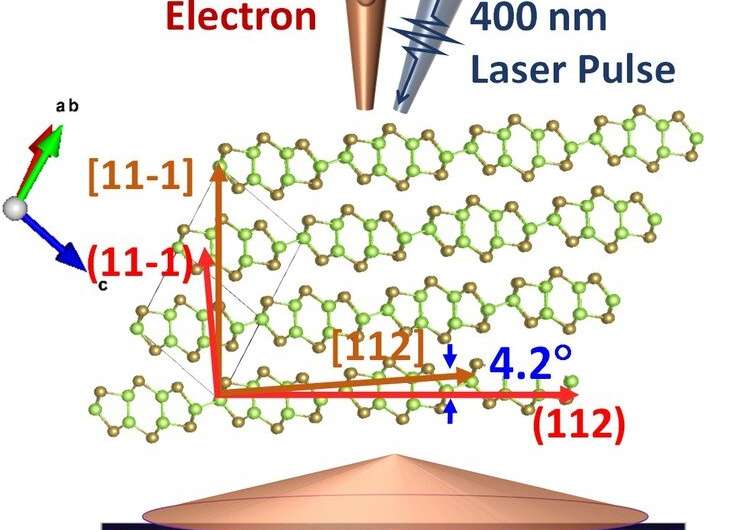New insights into van der Waals materials found

Layered van der Waals materials are of high interest for electronic and photonic applications, according to researchers at Penn State and SLAC National Accelerator Laboratory, in California, who provide new insights into the interactions of layered materials with laser and electron beams.
Two-dimensional van der Waals materials are composed of strongly bonded layers of molecules with weak bonding between the layers.
The researchers used a combination of ultrafast pulses of laser light that excite the atoms in a material lattice of gallium telluride, followed by exposing the lattice to an ultrafast pulse of an electron beam. This shows the lattice vibrations in real time using electron diffraction and could lead to a better understanding of these materials.
"This is a quite unique technique," said Shengxi Huang, assistant professor of electrical engineering and corresponding author of a paper in ACS Nano that describes their work. "The purpose is to understand fully the lattice vibrations, including in-plane and out-of-plane."
One of the interesting observations in their work is the breaking of a law that applies to all material systems. Friedel's Law posits that in the diffraction pattern, the pairs of centrosymmetric Bragg peaks should be symmetric, directly resulting from Fourier transformation. In this case, however, the pairs of Bragg peaks show opposite oscillating patterns. They call this phenomenon the dynamic breaking of Friedel's Law. It is a very rare if not unprecedented observation in the interactions between the beams and these materials.
"Why do we see the breaking of Friedel's Law?" she said. "It is because of the lattice structure of this material. In layered 2-D materials, the atoms in each layer typically align very well in the vertical direction. In gallium telluride, the atomic alignment is a little bit off."
When the laser beam shines onto the material, the heating generates the lowest-order longitudinal acoustic phonon mode, which creates a wobbling effect for the lattice. This can affect the way electrons diffract in the lattice, leading to the unique dynamic breaking of Friedel's law.
This technique is also useful for studying phase change materials, which absorb or radiate heat during phase change. Such materials can generate the electrocaloric effect in solid-state refrigerators. This technique will also be interesting to people who study oddly structured crystals and the general 2-D materials community.
More information: Qingkai Qian et al. Coherent Lattice Wobbling and Out-of-Phase Intensity Oscillations of Friedel Pairs Observed by Ultrafast Electron Diffraction, ACS Nano (2020). DOI: 10.1021/acsnano.0c02643
Journal information: ACS Nano
Provided by Pennsylvania State University





















